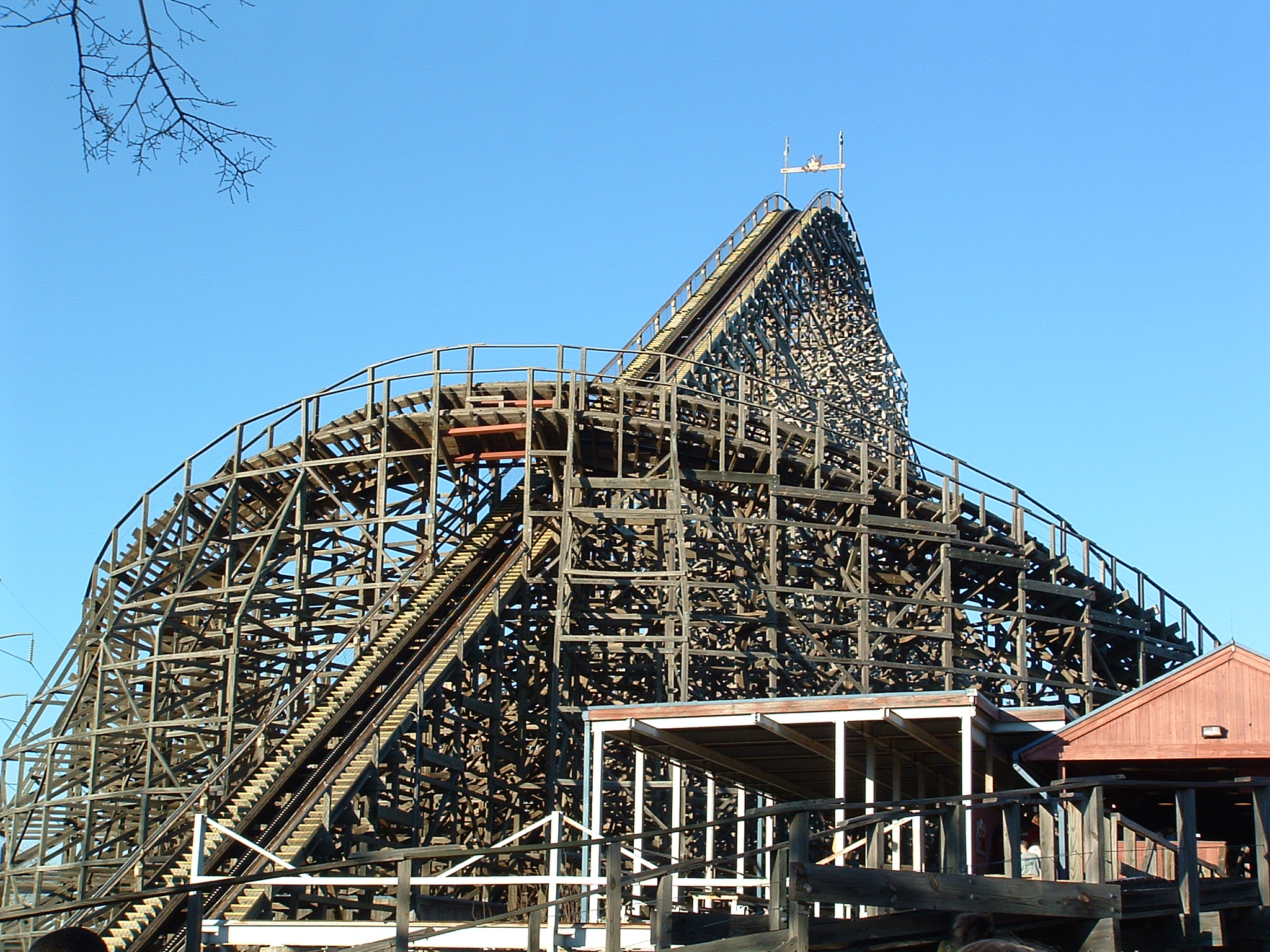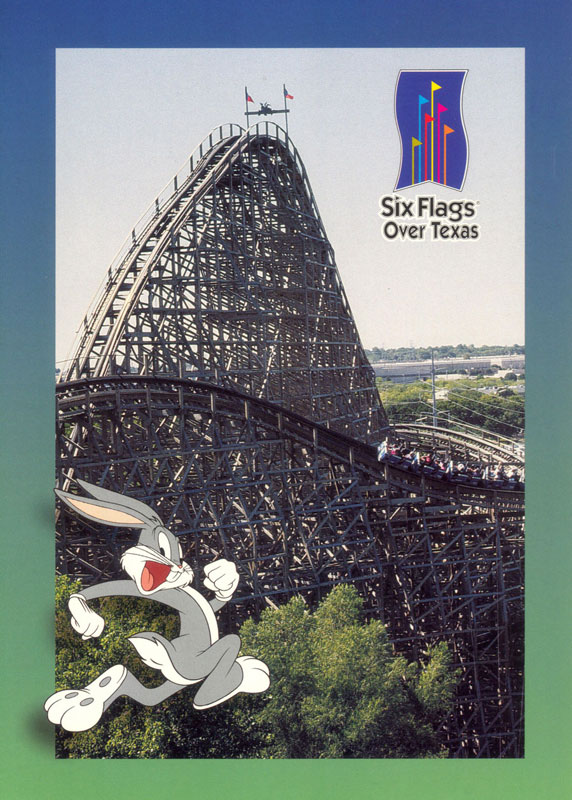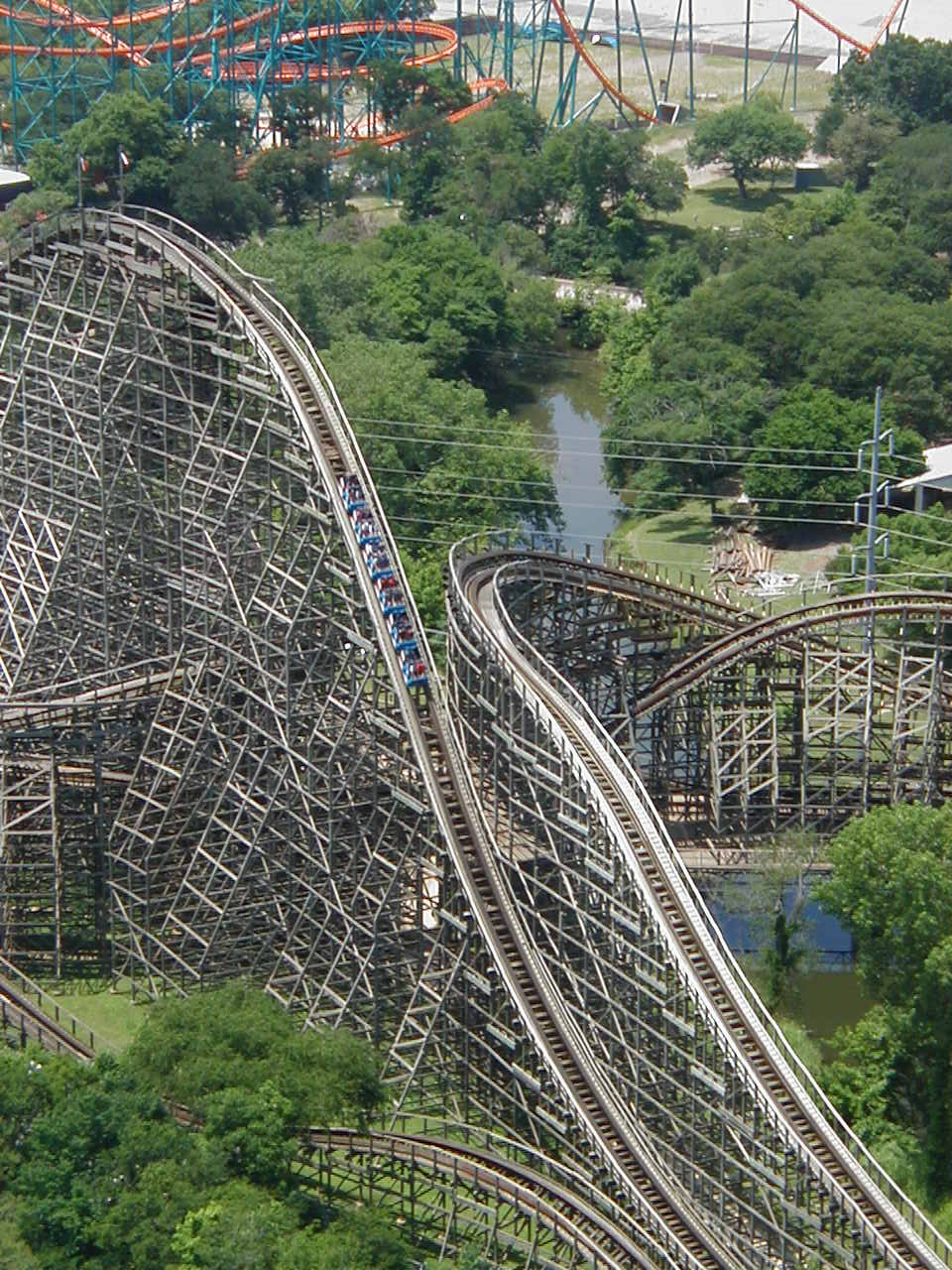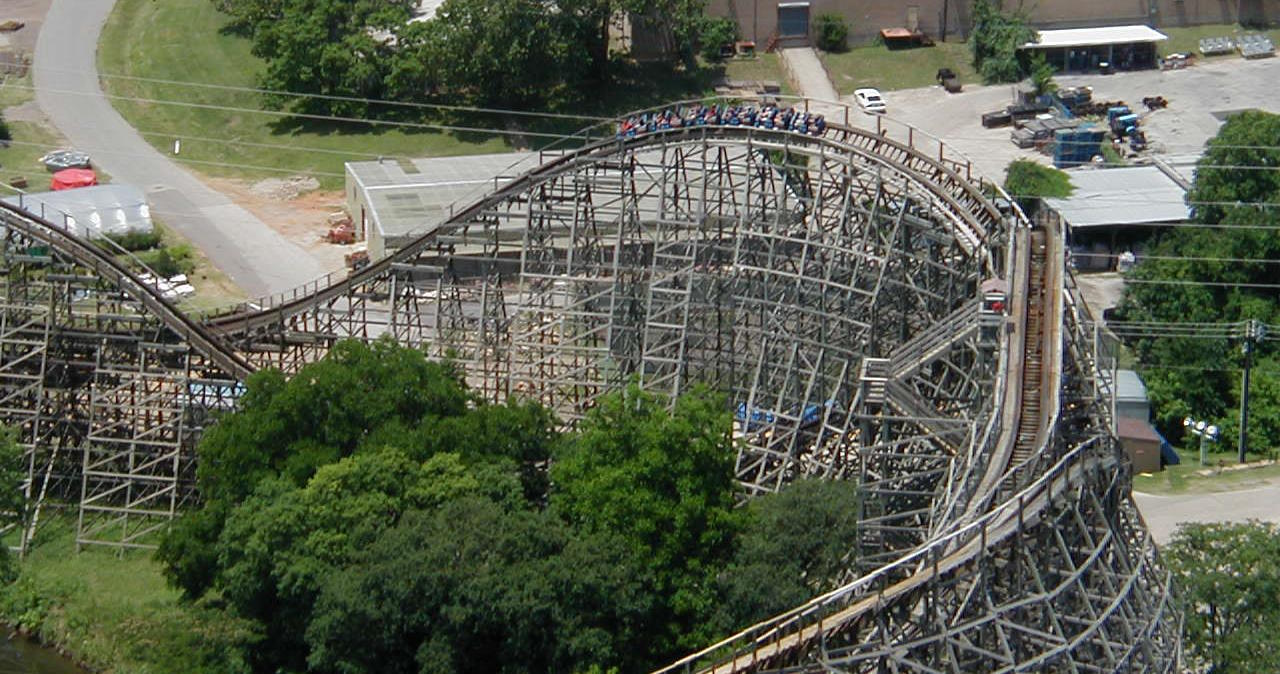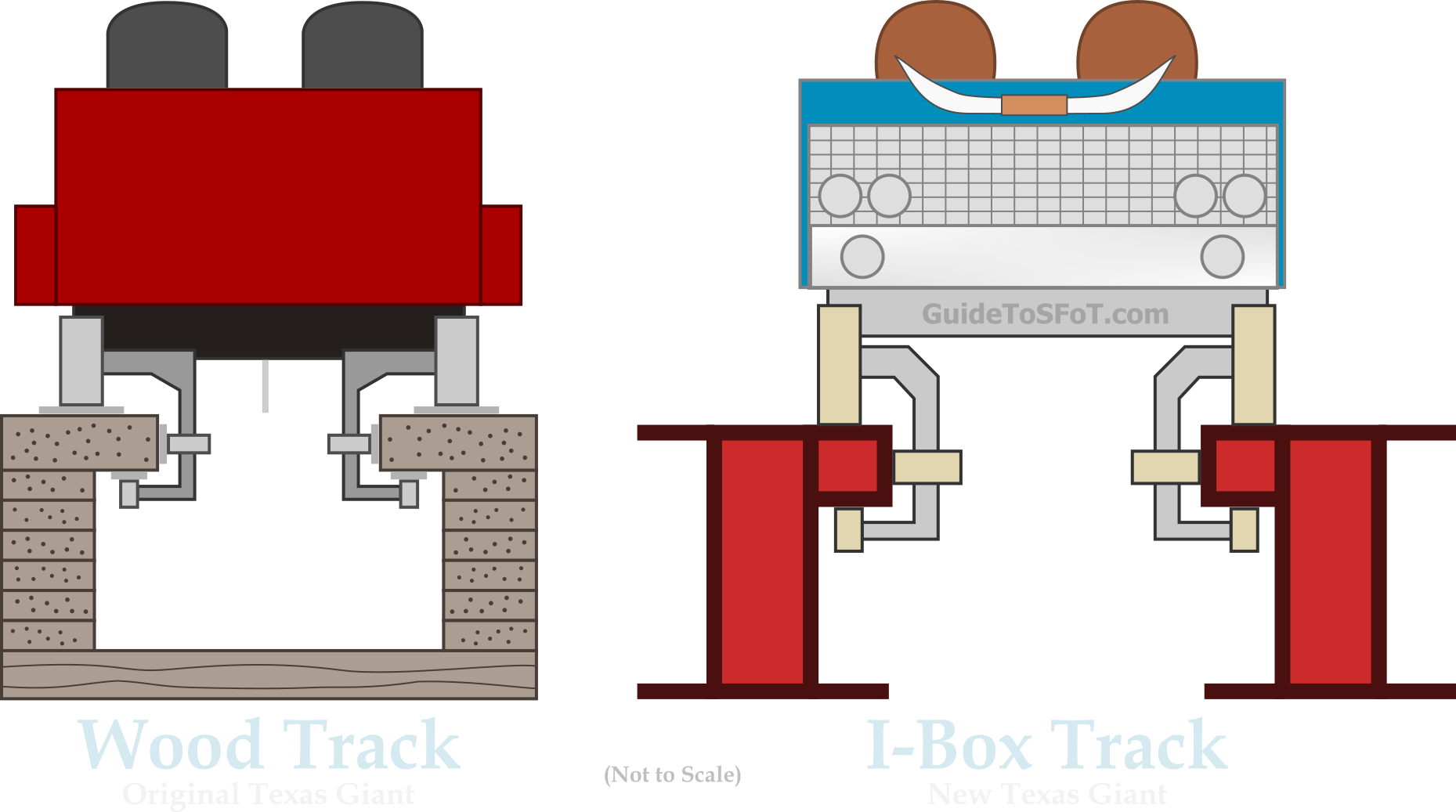Texas Giant: Reinvented
A look back at the ride's historic transformation
F or nearly 20 years, The Texas Giant stood as one of the most imposing wooden roller coasters ever created. So it was quite the shock when in 2009, Six Flags over Texas announced the ride would be shutting down for over a year to undergo an unprecedented $10 million renovation. The new ride, whatever it would entail, would reopen in 2011—the park’s 50th anniversary.
While the initial announcement lacked many details, as the project progressed, it quickly became apparent that it was no simple re-tracking. Instead, The Texas Giant’s makeover would be a full-on reimagining of the ride that would shatter expectations of what could be done to revamp aging wooden coasters. The New Texas Giant would ultimately set off a chain of similar projects worldwide at parks eager to update their stale attractions.
In this three-part Special Feature, we look back at the ride’s historic makeover that Guide to SFoT documented through every step of the construction.
This is Texas Giant: Reinvented.
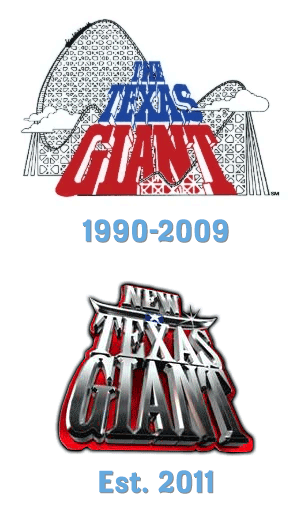
The Original Texas Giant
The Texas Giant debuted at Six Flags over Texas on March 17, 1990. Towering over the Texas section of the park, the ride broke the world record for tallest wooden coaster at 143 ft (44 m) tall.¹ The Giant was an instant enthusiast favorite, earning accolades and taking the top spot in rankings, even winning Amusement Today’s Golden Ticket award for best wooden coaster years later in 1998 and 1999 (when the awards began)².
However, time was not kind to the Giant. As is the case for most large-scale wooden coasters, it became increasingly difficult to keep up with the maintenance needed to maintain a quality ride. Weather cycles of rain and heat from the brutal Texas summers would warp and distort the wood supports and track, making the already-intense ride even more jarring. Ridership slowly began to decline from people not wanting to brave the Giant’s rough ride.
Tearing down and replacing the iconic attraction was never an option according to park management. Despite replacing over 1,200 ft (366 m) of track for the 2009 season,² the park knew they needed a more permanent fix to make The Texas Giant more rideable if it was to live on for decades more.
Enter Rocky Mountain Construction
Seeking a different solution to revamp the 19-year-old Texas Giant, Six Flags over Texas entered into talks with Fred Grubbs of Rocky Mountain Construction (RMC) and industry veteran Alan Schilke from Ride Centerline about a concept that had been in the works for 4 years: the Iron Horse track system.²
As it has since become known, the innovative “I-Box” track offered an attractive proposition: keep most of the existing support structure while replacing the wood track with the cost-saving steel track. As an added bonus, the new track’s rigidity would allow it to maneuver in ways never thought possible on a wood-structured coaster.
Traditional wood coasters have track made of stacked layers of wood topped with steel running rails and trains with steel wheels. That metal-on-metal contact gave the original Texas Giant that classic, clunky feeling associated with wood coasters. I-Box track, on the other hand, is an all-steel track construction, blending an I-beam with a box beam. Coupled with new trains with polymer wheels, it meant the new Texas Giant would essentially be a steel coaster, though the term “hybrid coaster” eventually took over.
In Part 2 of Texas Giant: Reinvented, the interesting construction process begins, slowly revealing the multiple tricks Six Flags over Texas and RMC have up their sleeves for the reimagined ride.
How I-Box Track Works
So how exactly did the I-Box track system innovate over existing roller coaster track designs?
According to the patent filing, traditional steel coaster track is made with steel tubes that are heated and bent with pipe-bending equipment to form the curves. This manufacturing process is complex and adds stress to the tube, requiring sections to eventually be replaced due to fatigue.
I-Box track starts with 3D track sections that software then translates from curved track to equivalent flat sections, allowing track pieces to be cut from flat stock. The flat pieces are then directly placed into holding fixtures, forced into shape, and welded together.
The purported benefits are not only reduced fabrication time and cost, but also track that is less susceptible to fatigue, ultimately requiring less maintenance.
Sources
- Texas Giant. RCDB. https://rcdb.com/2.htm
- Baldwin, T. (2011, May). Amusement Today. Retrieved April 11, 2024, from https://amusementtoday.com/backissues/at_may_2011_web.pdf.

